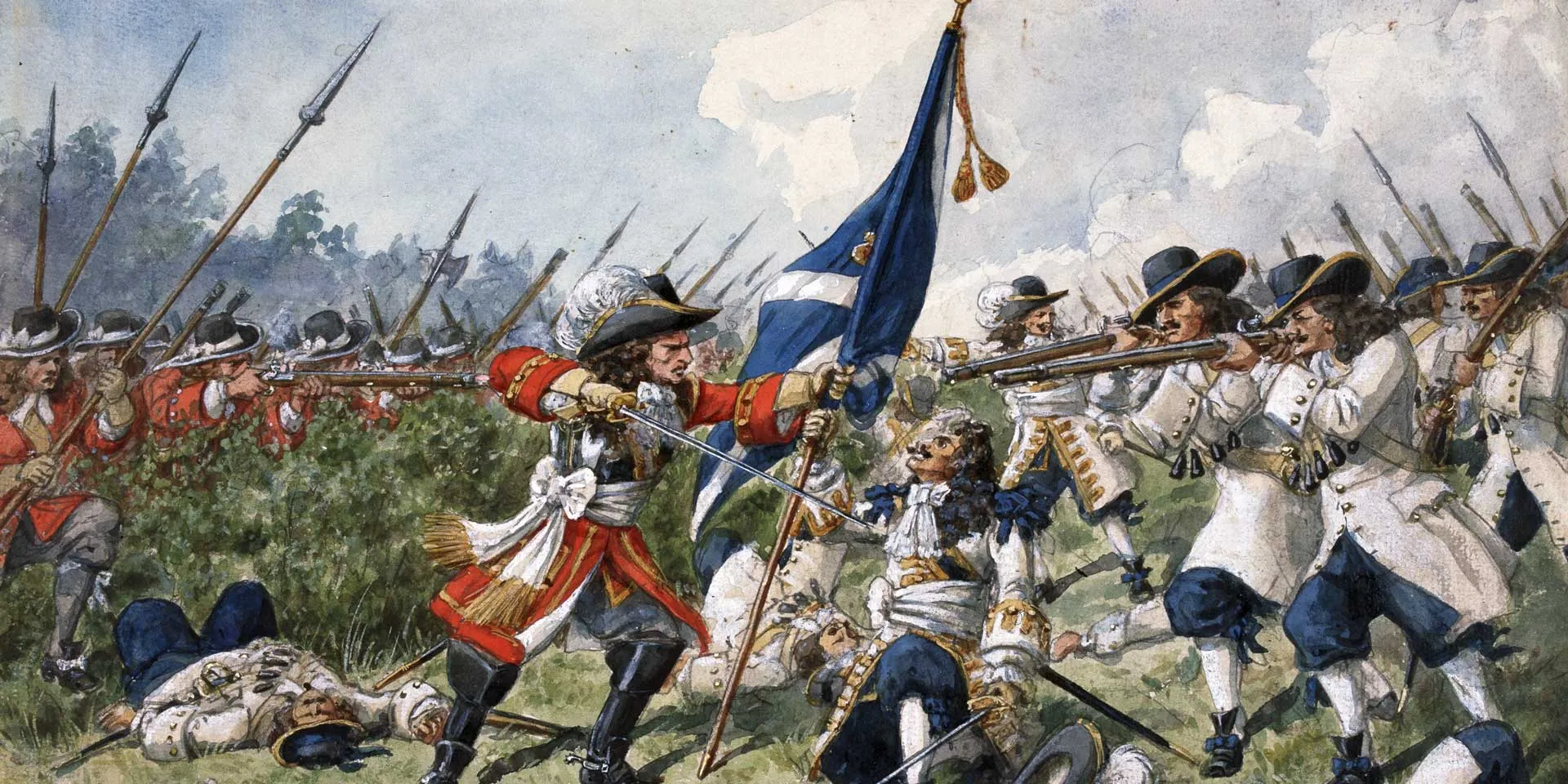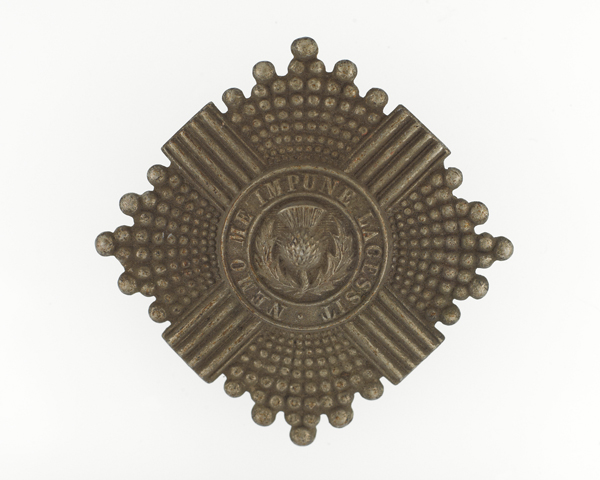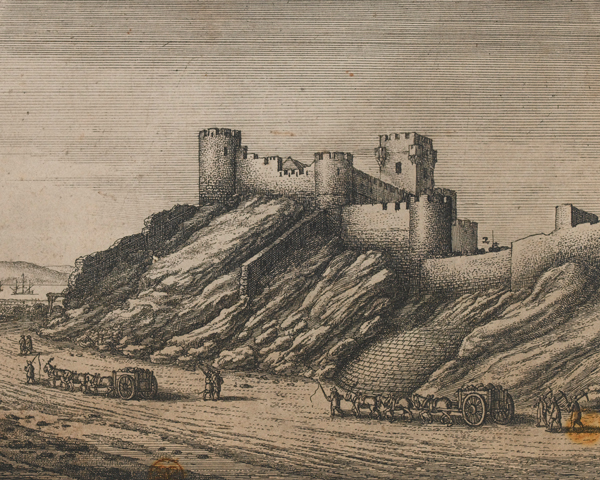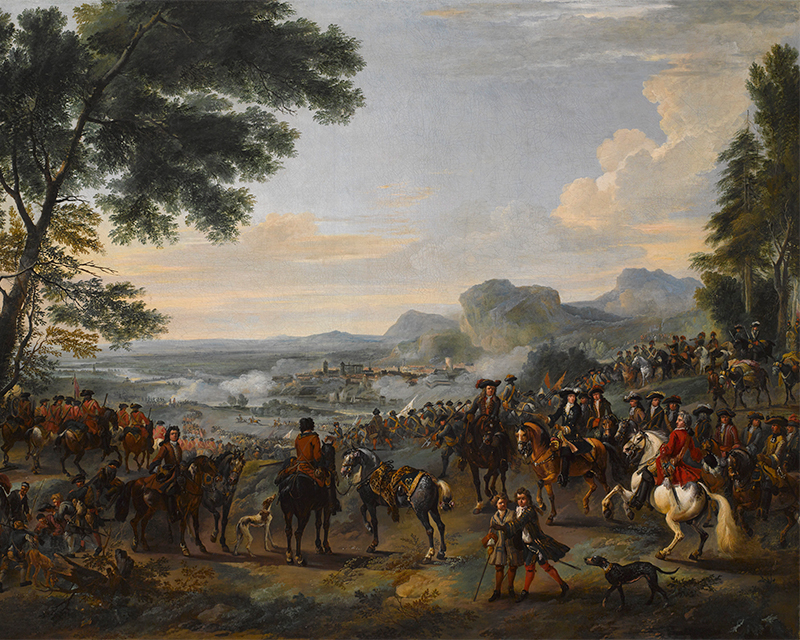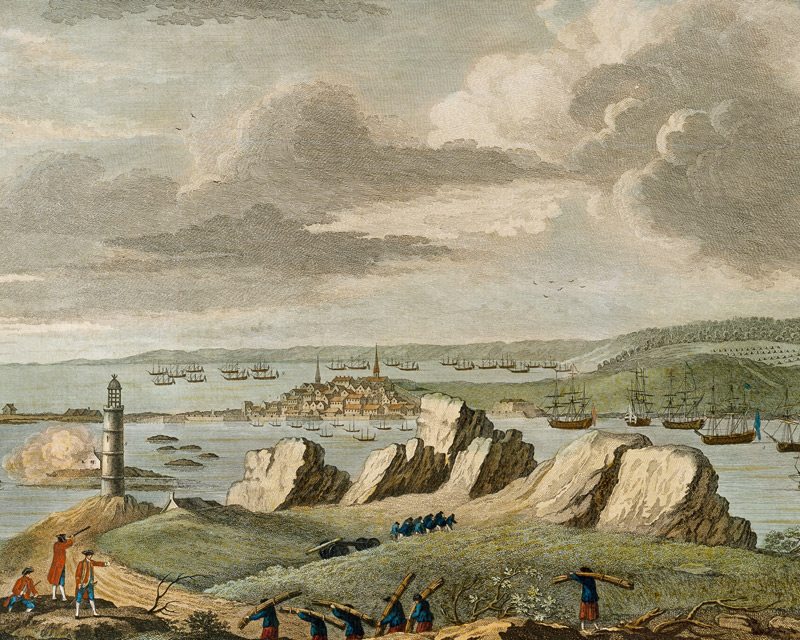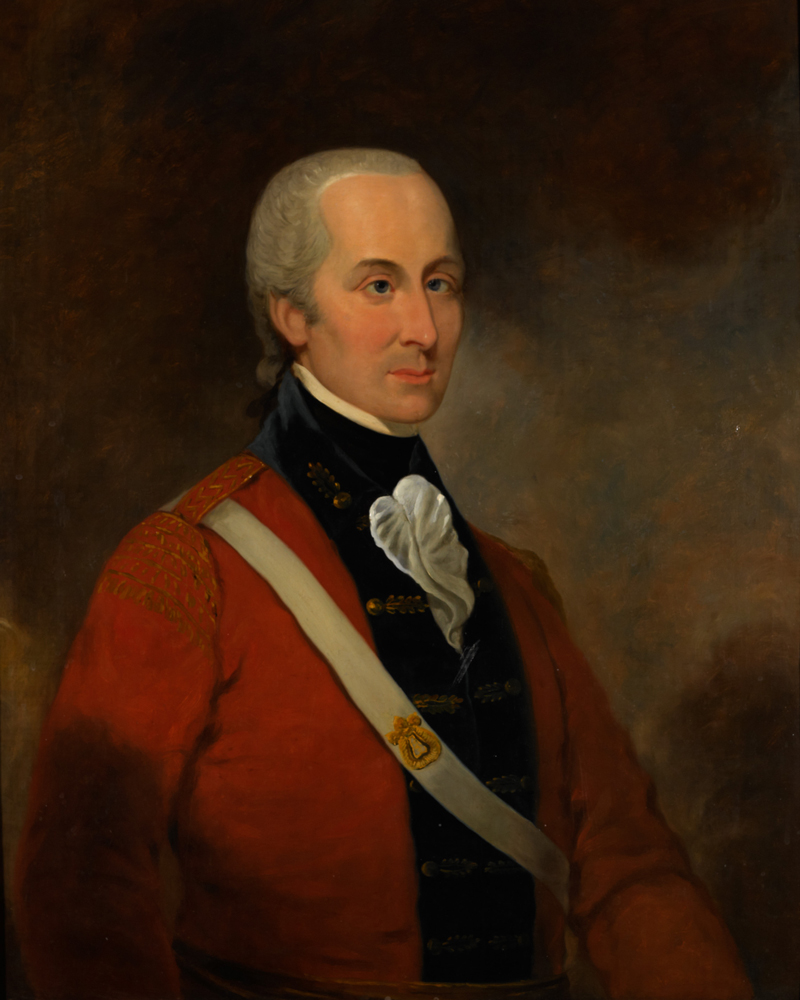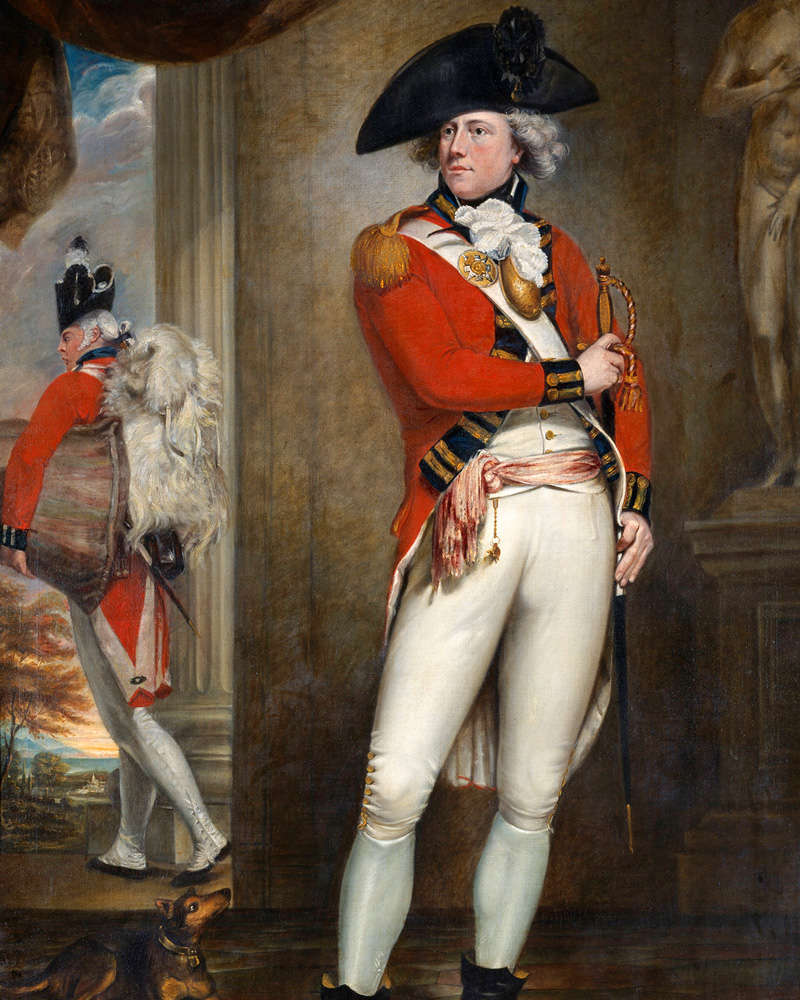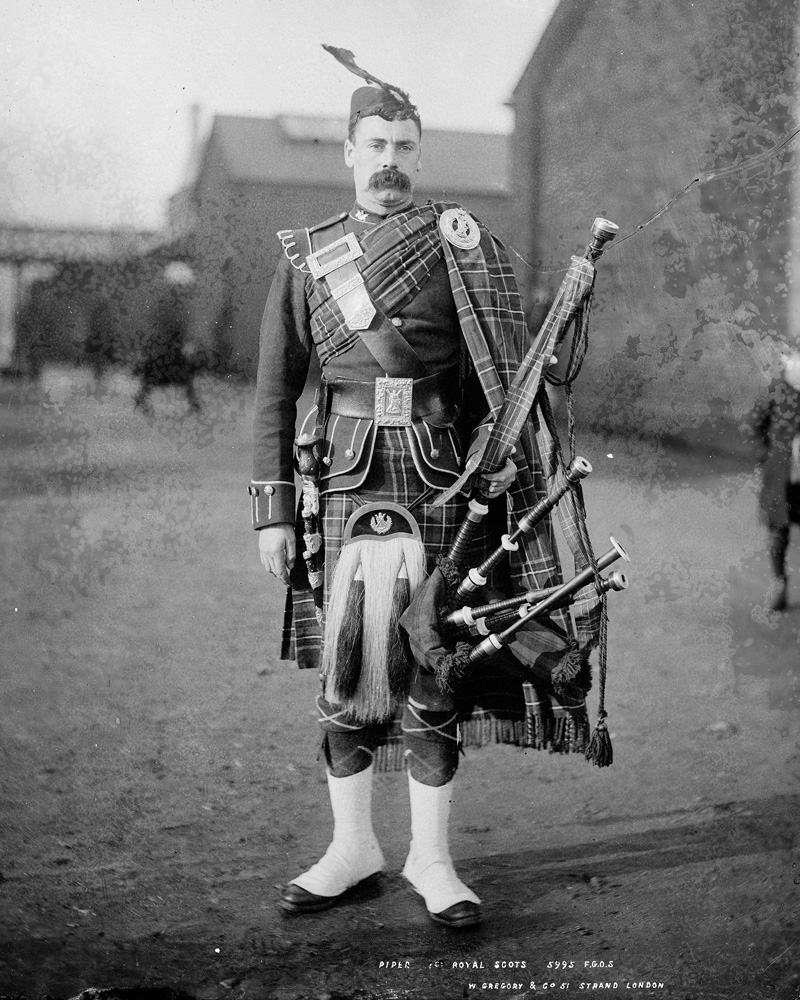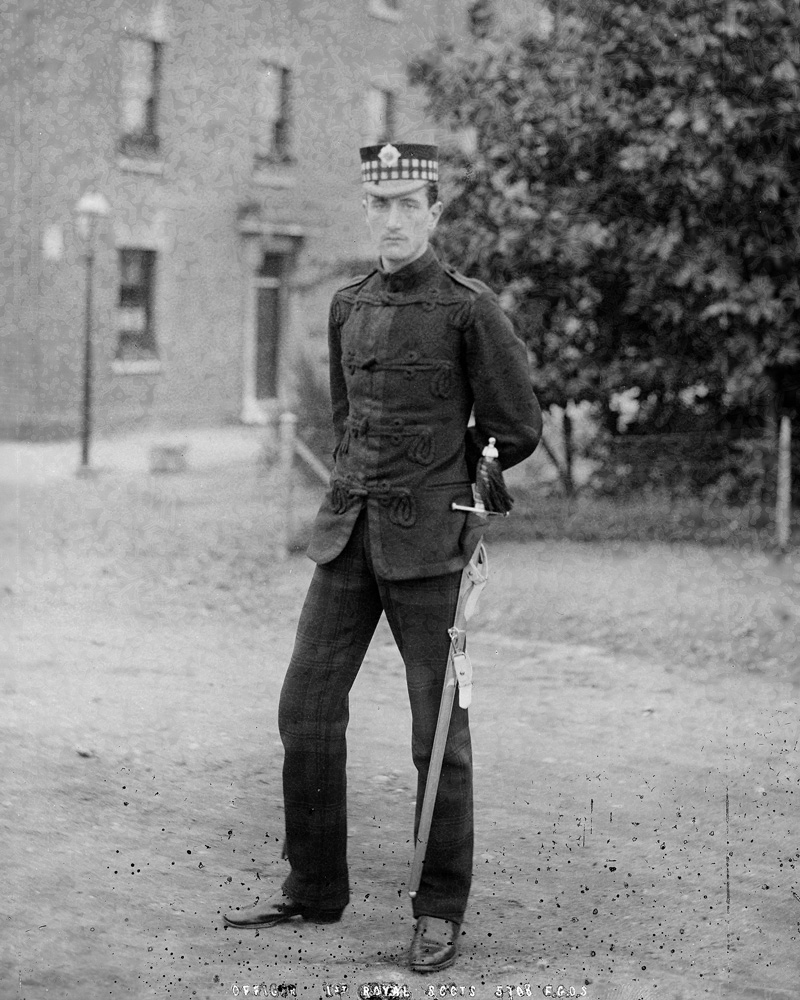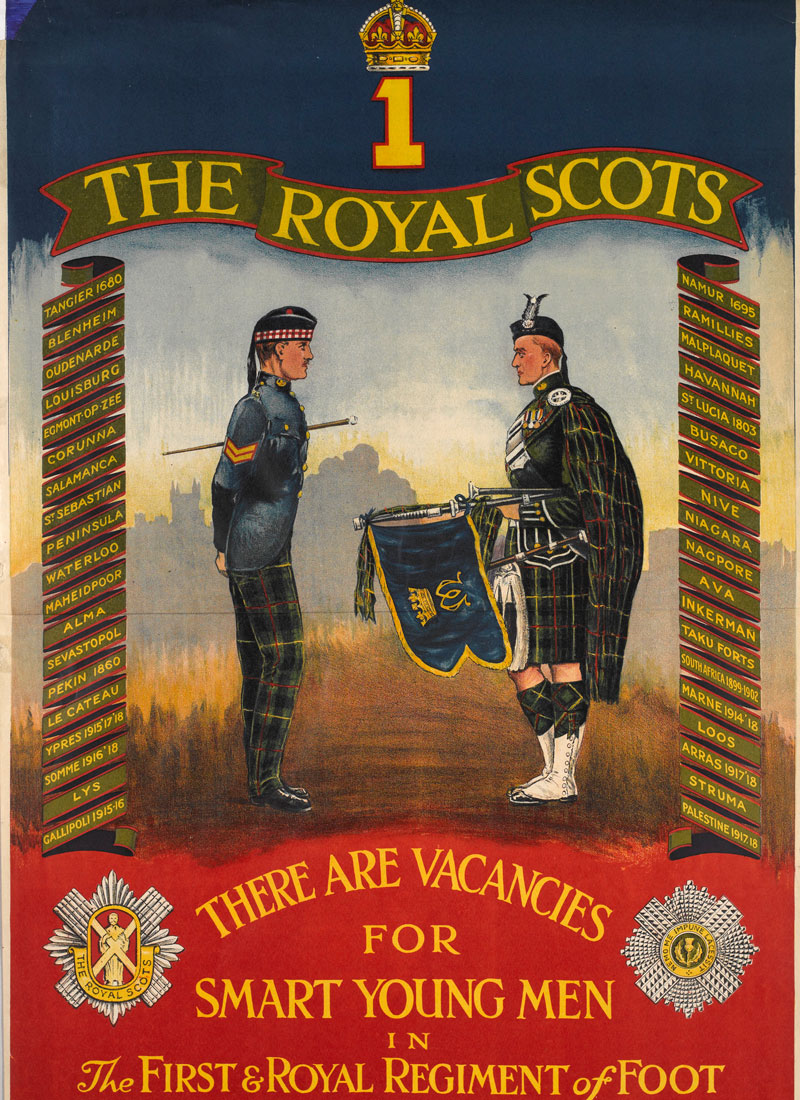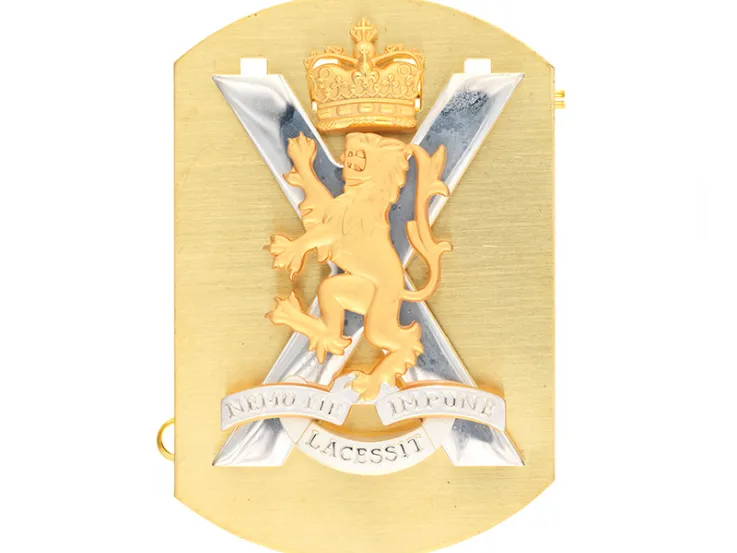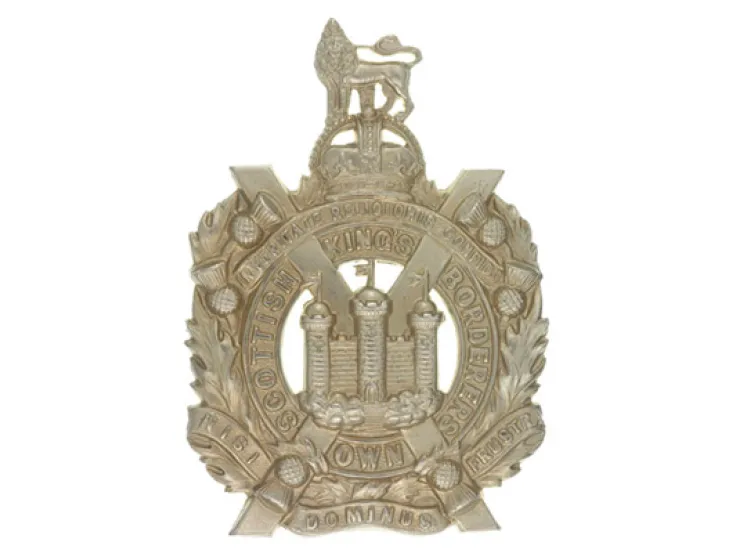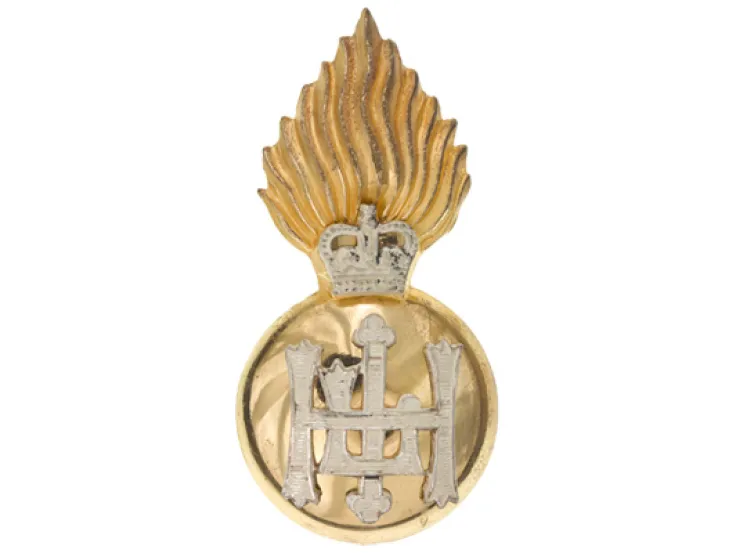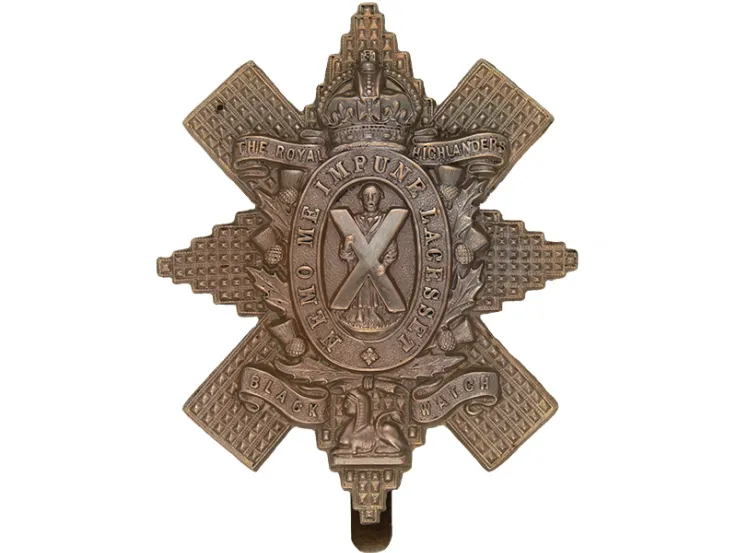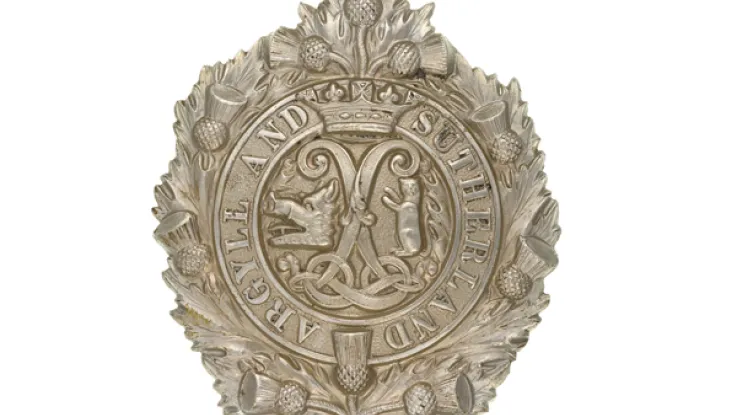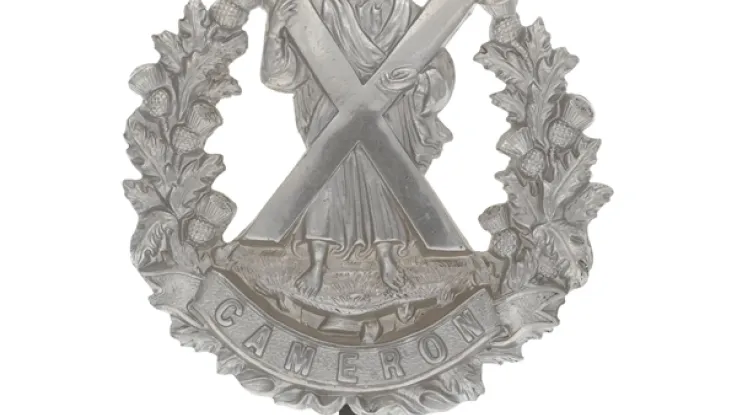Origins
The Royal Scots’ origins date back to 1625, when Scottish soldier John Hepburn raised a regiment to serve with the armies of Gustavus Adolphus of Sweden during the Thirty Years War (1618-48). These men formed the basis of the Royal Regiment of Foot, raised by Hepburn under royal warrant in 1633 and placed on the Scottish establishment.
This new unit deployed to the Continent, fighting alongside the armies of Louis XIII and Louis XIV of France. While officially remaining a regiment of the British crown, its service with the French lasted 27 years, so it remained overseas throughout the British Civil Wars (1642-51).
It was brought onto the English establishment in 1662, two years after the restoration of Charles II. It continued to alternate between English and French service until 1678, when it returned to the English establishment once and for all, receiving the title His Majesty’s Royal Regiment of Foot in 1684.
17th century
In 1680, the regiment earned its first battle honour defending the English colony of Tangier (now in Morocco). It went on to gain a further 148 battle honours in a history that saw it take part in most of the campaigns the British Army fought.
It helped James II suppress the Duke of Monmouth’s rebellion in 1685, raising a 2nd Battalion the following year.
In 1689, after James II had been deposed by William III in the 'Glorious Revolution', the regiment mutinied. To legislate against this kind of behaviour, the first Mutiny Act was introduced that same year, establishing the rights of the King and Parliament to control the Army.
The regiment's two battalions were heavily involved during the Nine Years War (1689-97), fighting at Steenkerque (1692), Landen (1693) and Namur (1695).
Quiz
Which of the following was a nickname for the Royal Scots?
During the 17th century, the Royal Scots were given the nickname 'Pontius Pilate's Bodyguard' by French soldiers they were serving with. This followed a dispute between the Royal Scots and a French Regiment over seniority and who deserved to parade on the right of the line. The French asserted that they were the senior regiment, having been on guard at the Crucifixion. The Royal Scots claimed that had they been there too, the body would not have gone missing!
Early 18th century
During the War of the Spanish Succession (1702-13), the regiment served at Blenheim (1704), Ramillies (1706) and Malplaquet (1709).
The 1st Battalion was back on the Continent during the War of the Austrian Succession (1740-48), seeing action at Fontenoy (1745) and several other engagements. Meanwhile, 2nd Battalion helped defeat the Second Jacobite Rebellion (1745-46), service that included the Battle of Culloden (1746).
In 1751, it was renamed the 1st (Royal) Regiment of Foot, reflecting its status as the Army's most senior line infantry regiment.
Late 18th century
During the Seven Years War (1756-63), 2nd Battalion served in North America and the Caribbean, fighting at Louisburg (1758), Guadeloupe (1759) and Havana (1762).
In the 1760s and 1770s, both battalions garrisoned Mediterranean outposts. In 1781, 1st Battalion was despatched to the West Indies during the American War of Independence (1775-83). There, it helped take Saint Eustatius (1781), before itself being captured at Saint Kitts (1782).
On release, it spent the 1790s garrisoning the West Indies during the French Revolutionary Wars (1793-1802). Meanwhile, 2nd Battalion served in the Mediterranean. This included Toulon (1793), Corsica (1794), Aboukir (1801) and Alexandria (1801). In 1799, the battalion also took part in the unsuccessful Anglo-Russian invasion of Holland.
Early 19th century
During the Napoleonic Wars (1803-15), both battalions served in the West Indies, helping to occupy Saint Thomas (1801), Saint Lucia (1803), Demerara and Essequibo (1803), and Guadeloupe (1810). 1st Battalion was then sent to Quebec following the outbreak of the War of 1812 (1812-15), going on to fight in many battles in North America.
Meanwhile, 2nd Battalion had moved to India in 1806, where it remained until 1826, fighting in the Third Maratha War (1817-19) and the First Burmese War (1824–26).
The regiment also raised a 3rd Battalion in 1804. This served in the Peninsular War, fighting at Corunna (1809), before being evacuated and sent on the Walcheren Expedition. It returned to Iberia, taking part in many engagements, including Fuentes de Onoro (1811), Salamanca (1812), Vitoria (1813) and the Battle of Nive (1813), before advancing into France in 1814. It later fought at Waterloo (1815). After serving with the Army of Occupation in France, it was disbanded in 1817.
In 1812, the regiment adopted its 'Royal Scots' title for the first time, becoming the 1st Regiment of Foot (Royal Scots).
Late 19th century
The regiment undertook garrison duties across the British Empire during Queen Victoria's reign. The 1st Battalion also helped put down the Canadian Rebellion of 1837-38, before deploying to the Crimean War (1854-56) alongside 2nd Battalion. Service at the Alma (1854), Inkerman (1854) and Sevastopol (1855) followed.
After further garrison duty at home and abroad, 2nd Battalion fought in China during the Second Opium War (1856-60), helping to take the Taku Forts.
Both battalions served during the Boer War (1899-1902), primarily in the anti-guerrilla campaign. They were joined in South Africa by the 3rd (Militia) Battalion.
In 1881, as part of wider Army reforms, the regiment became The Royal Scots (Lothian Regiment), serving as the county regiment for Edinburgh (Midlothian), Haddingtonshire (East Lothian) and Linlithgow (West Lothian). Berwickshire was another of its recruiting areas, but this passed to the King's Own Scottish Borderers in 1887.
First World War
During the First World War (1914-18), The Royal Scots raised more than 30 Regular, Territorial, Special Reserve, Garrison and New Army battalions, and over 100,000 men served in the regiment. Nearly half of these were either killed or wounded.
Its battalions served on the Western Front in France and Flanders, at Gallipoli (1915), Egypt and Palestine (1916-18) and at home. Altogether, the regiment won 79 battle honours during the conflict.
In 1921, it was renamed The Royal Scots (The Royal Regiment), reintroducing the title by which it had been known in its earliest years.
During the inter-war years, 1st Battalion garrisoned Burma, India and Aden. Meanwhile, 2nd Battalion served during the Irish War of Independence (1919-21), before moving to Egypt, India and Hong Kong.
Second World War
During the Second World War (1939-45), 1st Battalion was captured at Dunkirk (1940) after fighting several rearguard actions against the Germans. The Territorial 7th/9th Battalion also served in France during 1940. It returned to the Continent in 1944.
In 1941, 2nd Battalion was captured by the Japanese at Hong Kong (1941).
The reformed 1st Battalion served at home before deploying to India and Burma from 1943 onwards. It fought at Kohima in 1944.
Meanwhile, 2nd Battalion was reformed from the men of 12th Battalion – one of several hostilities-only battalions raised by The Royal Scots during the conflict. It served in Italy from 1944, before moving on to Palestine the following year.
Another hostilities-only unit, the 8th Battalion, landed in Normandy in 1944 and went on to fight its way into Germany, ending the war near Hamburg.
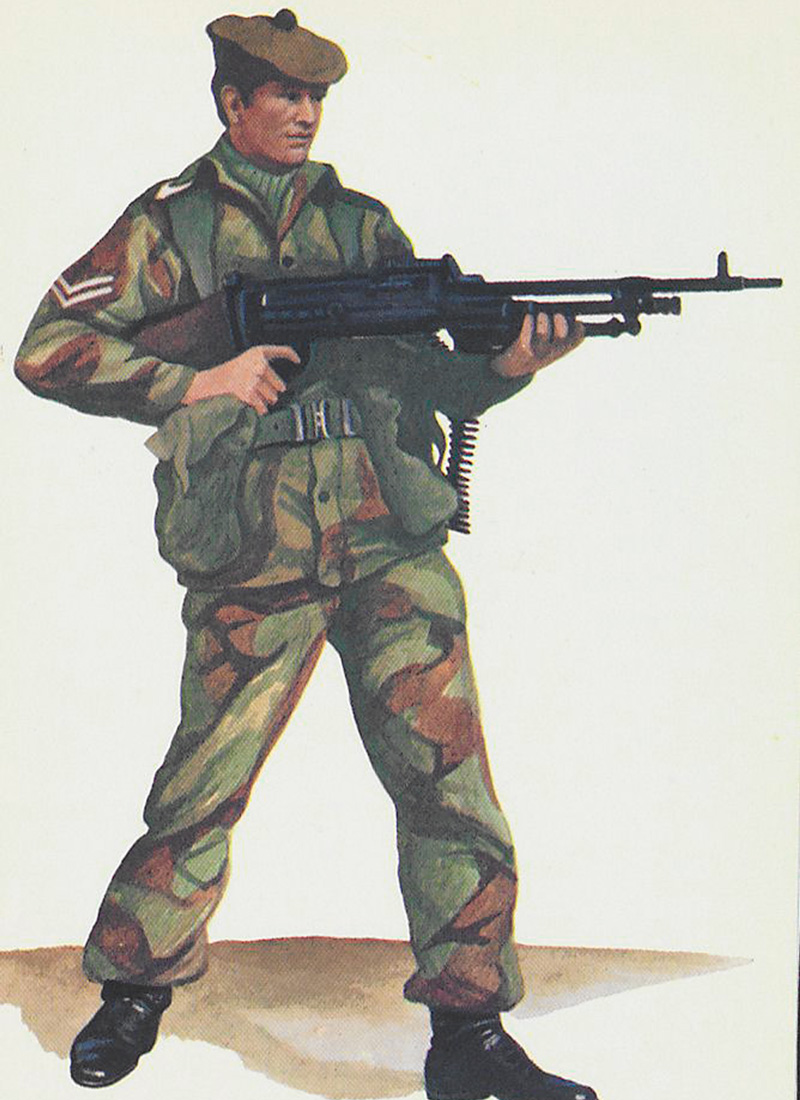
Corporal of The Royal Scots in Combat Dress, 1972
Post-war deployments
After the war, the regiment garrisoned India, Palestine and Trieste. In 1949, its two regular battalions merged, making The Royal Scots a single-battalion regiment for the first time since 1686.
Over the next five decades, it regularly spent time in Germany with the British Army of the Rhine, while also serving during the Korean War (1953), and at Cyprus (1955 and 1974), Aden (1964) and the Falkland Islands (1984).
During the 1970s and 1980s, the regiment undertook several tours of Northern Ireland during 'the Troubles'. It also deployed to the Gulf War (1990-91). It later undertook peacekeeping duties in Bosnia (2002) before serving in Iraq (2003-04 and 2006) during Operation Telic.
Legacy
In 2006, after 373 years’ distinguished service, The Royal Scots merged with the Army’s five other Scottish infantry regiments to form The Royal Regiment of Scotland.
Regimental museums
The National Army Museum works with a network of Regimental and Corps Museums across the UK to help preserve and share the history and traditions of the Army and its soldiers.
Discover more about The Royal Scots by visiting the Royal Scots Museum at Edinburgh Castle.

